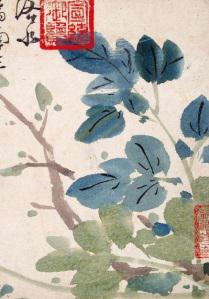I have not been working as diligently as I should on my legal haiku for this year’s ABA Ross Essay Contest. I’ve spent about ten minutes on it, mostly trying to come up with the right image to convey.
Part of the problem is that I am not a fan of haiku in general, at least not as an English verse form. English writers began trying to work with haiku in the mid-twentieth century and adopted the 5-7-5 syllable convention we still use today, even though it doesn’t really convey the effect of the form in Japanese. Authentic Japanese haiku uses morae or on, which are phonetic sounds, not syllables. A haiku in Japanese is therefore usually more stark than one in English.
Authentic haiku generally presents two vivid images superimposed against one another by means of a kireji, or cutting word. The effect is sometimes that of a Zen-style koan, a concept Western-trained thinkers often struggle with. We like things to fit together neatly and we like our loose ends tied up; we really don’t know what to do with the sound of one hand clapping, thank you very much. Additionally, Japanese haiku employs a kigo, which is a word that corresponds with a season. There is a long list of kigo: a certain word for rain signifies an autumn rain, for example, while another word means a summer rain and so on. We simply don’t have that sort of rich linguistic tradition to draw on in English.

For these reasons, I believe the most successful English haiku are those that attempt the spirit of the haiku and ignore the 5-7-5 convention altogether. Ezra Pound’s In a Station of the Metro is one famous example:
The apparition of these faces in the crowd; Petals on a wet, black bough.
The imagery of the petals pressed wetly against a knotted branch is the essence of springtime. Contrast that with the “apparition” of the faces sliding by as a train enters or departs the station. And Pound uses sound masterfully here: the “a” sounds in apparition, faces, petals and black; the “o” in crowd and bough; the “e” in these and petals. I love this poem. But it is not, technically speaking, English language haiku because of the 5-7-5 rule.
This one, by Richard Wright, respects the syllabic rule and works beautifully:
Whitecaps on the bay; A broken signboard banging In the April wind.
It doesn’t achieve the shift in perception or understanding that haiku generally strives for, though.
My initial efforts at writing a legal haiku have not been promising, to say the very least. It’s hard to find a good, concrete image from something as abstract as law. I thought I was on to something when I started playing around with Wallace Stevens’ Thirteen Ways of Looking at a Blackbird. I figured Stevens was a lawyer and a blackbird is a natural for haiku. What I got down on paper was:
The lawyer-poet’s Essential fallacy Thirteen ways of looking At a policy.
Awful. I know. It was going to be a series of haiku building on that theme. I suspect my first mistake was the theme itself, which isn’t visceral enough for haiku, and my second was trying to force the rhyme. So I’m going back to the drawing board, although I think I might have the bones for something else there. A lyric, maybe.
In any event, I am feeling a little discouraged, and so I have taken up my dog-eared copy of Rainer Maria Rilke’s Letters to a Young Poet. I turn to one of the passages I highlighted in college and note with a smile – every time, without fail – just how much the yellow has faded. These are the lines I’m holding on to today:
Everything is gestation and then bringing forth. To let each impression and each germ of a feeling come to completion wholly in itself, in the dark, in the inexpressible, the unconscious, beyond the reach of one’s own intelligence, and await with deep humility and patience the birth-hour of a new clarity: that alone is living the artist’s life: in understanding as in creating.
From Letters to a Young Poet, Ranier Maria Rilke (trans. M.D. Herter Norton) W.W. Norton & Co. (1962)
I believe I have the deep humility part down now, Herr Rilke.
